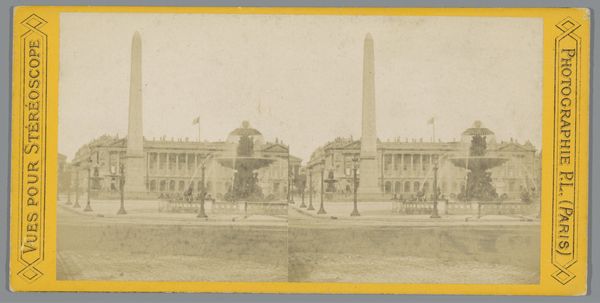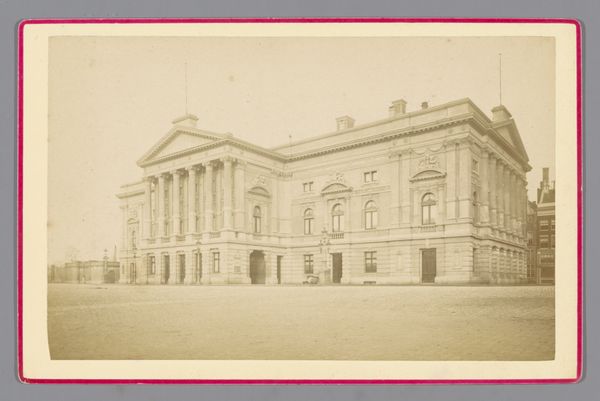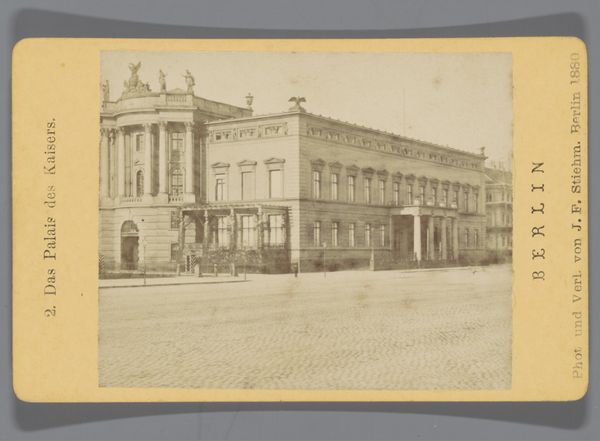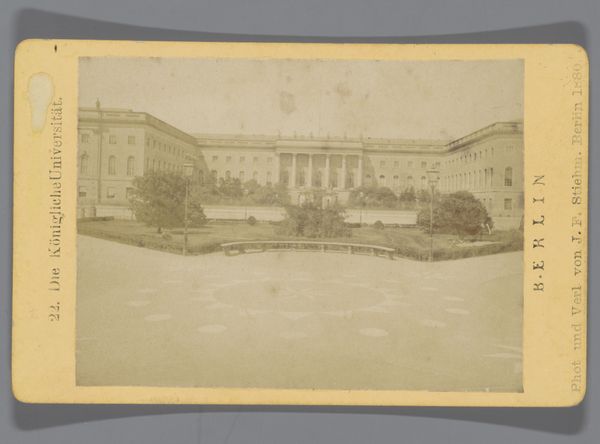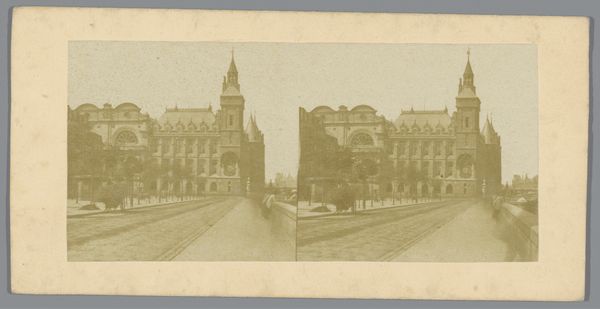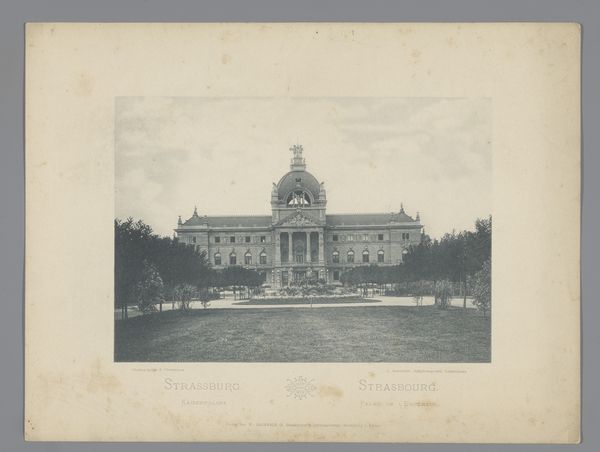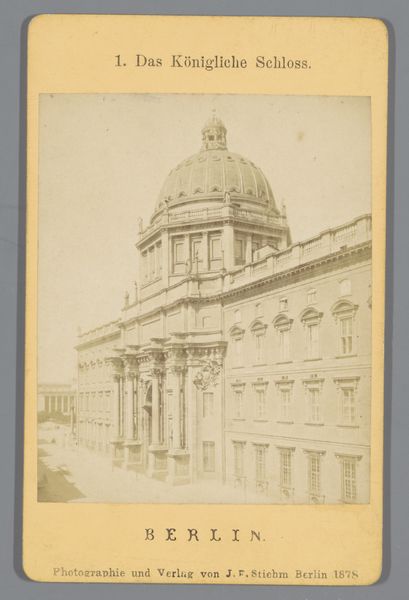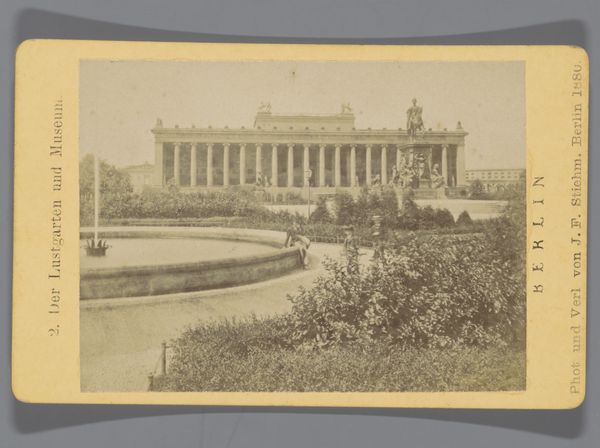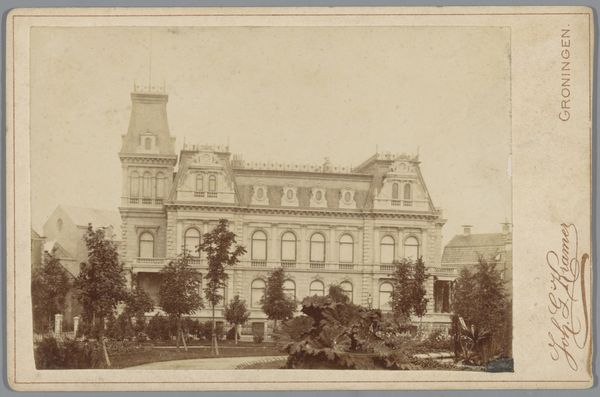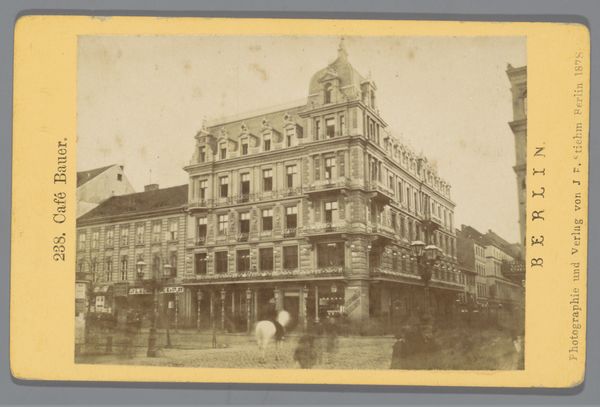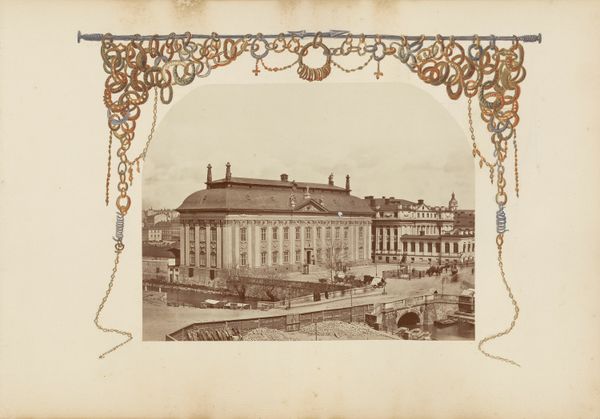
Dimensions: height 67 mm, width 106 mm
Copyright: Rijks Museum: Open Domain
Curator: This gelatin silver print from 1880 by Johann Friedrich Stiehm presents the Kronprinzenpalais on Unter den Linden in Berlin. A stately photograph from a bygone era. What strikes you first about this image? Editor: Honestly, it feels… spectral. There's a haze, almost as if the city itself is a ghost remembering its own grandeur. And yet, the rigid architecture insists on permanence. A real dichotomy. Curator: That's quite perceptive. Consider the Palais itself. The Neoclassical architecture speaks of imperial ambition, a desire to root the Prussian monarchy within the classical ideals of permanence, rationality, order, and grandeur. Think of those unwavering columns… Editor: Exactly, but look closer. The ghostly effect softens that rigidity, making even the stone seem ephemeral. It's as if the city is constantly writing and re-writing its history over itself, a palimpsest of power. Is there something subtly unstable happening here? It has echoes of history painting, though. Curator: Yes, though this photograph isn't painting exactly, it certainly captures that impulse towards idealisation and monumentality which makes me ask—how does the photo contend with the city’s relentless, mutable character over time? What memory did Stiehm hope to fix with his silver print? Editor: Memory is fragile. I'm interested in the contrast between that desire for permanence that you mentioned, the imperial desire, and photography’s own instability, its tendency to fade and decay over time, much like memory. Perhaps the photograph isn’t so much about capturing a stable present, as a process of creating, not recording history. Curator: An insightful consideration. Note the presence of the horse-drawn carriage, a quaint yet potent emblem of that period—a subtle symbol of progress within a portrait steeped in tradition and classical references. Editor: Good point. The presence of motion and transport also provides scale. Curator: Ultimately, this photograph resonates as a portrait of power and place frozen in a moment that has already become history, a reminder of the echoes that architecture can carry, and how photography plays with themes of recollection, continuity, and even, disruption. Editor: A ghostly snapshot of a solid, historical structure—with a sense of constant reinvention already baked into it, then. An impressive study of time itself.
Comments
No comments
Be the first to comment and join the conversation on the ultimate creative platform.
